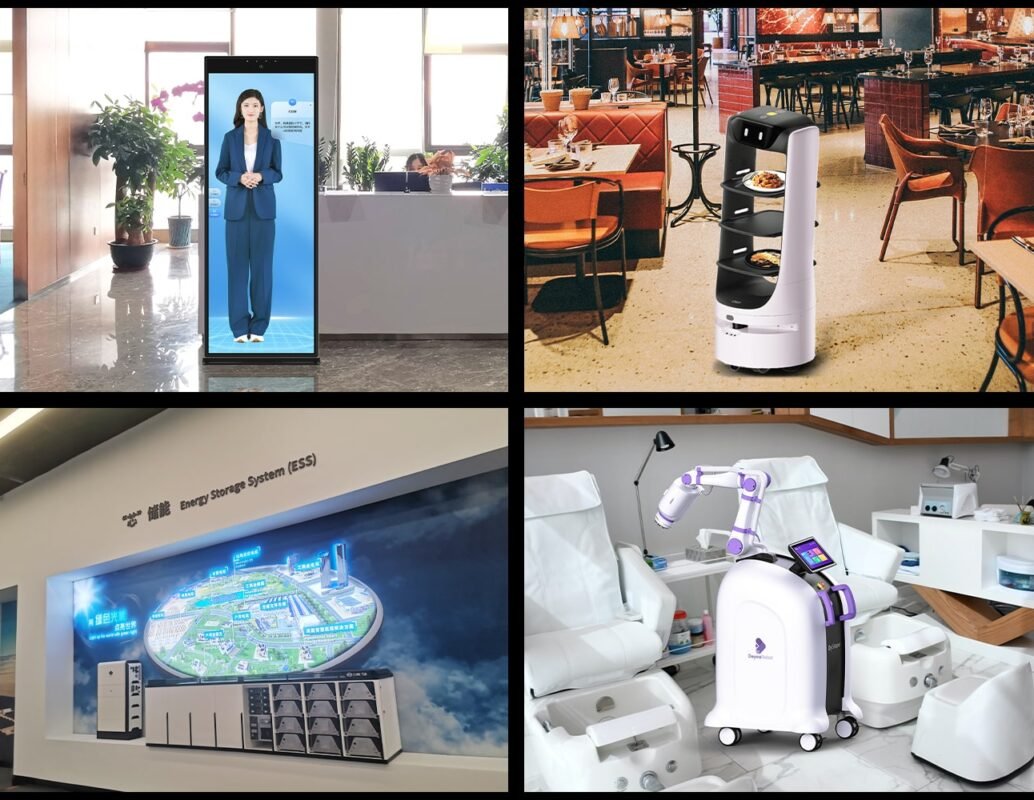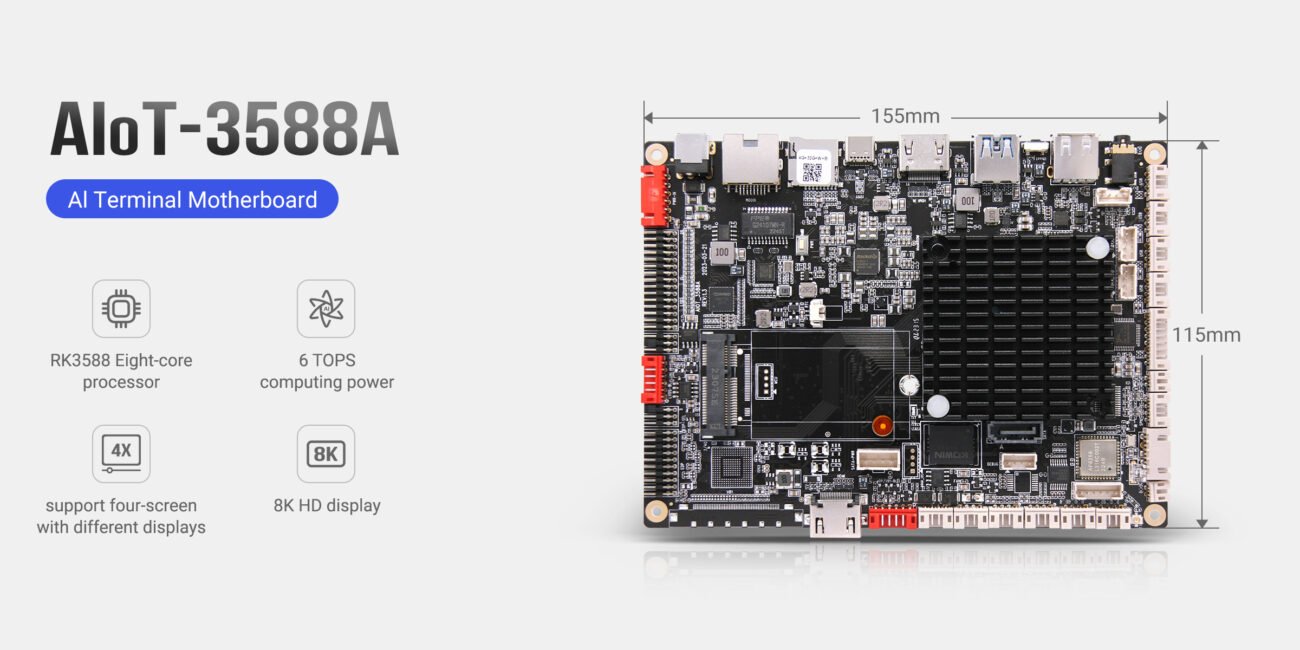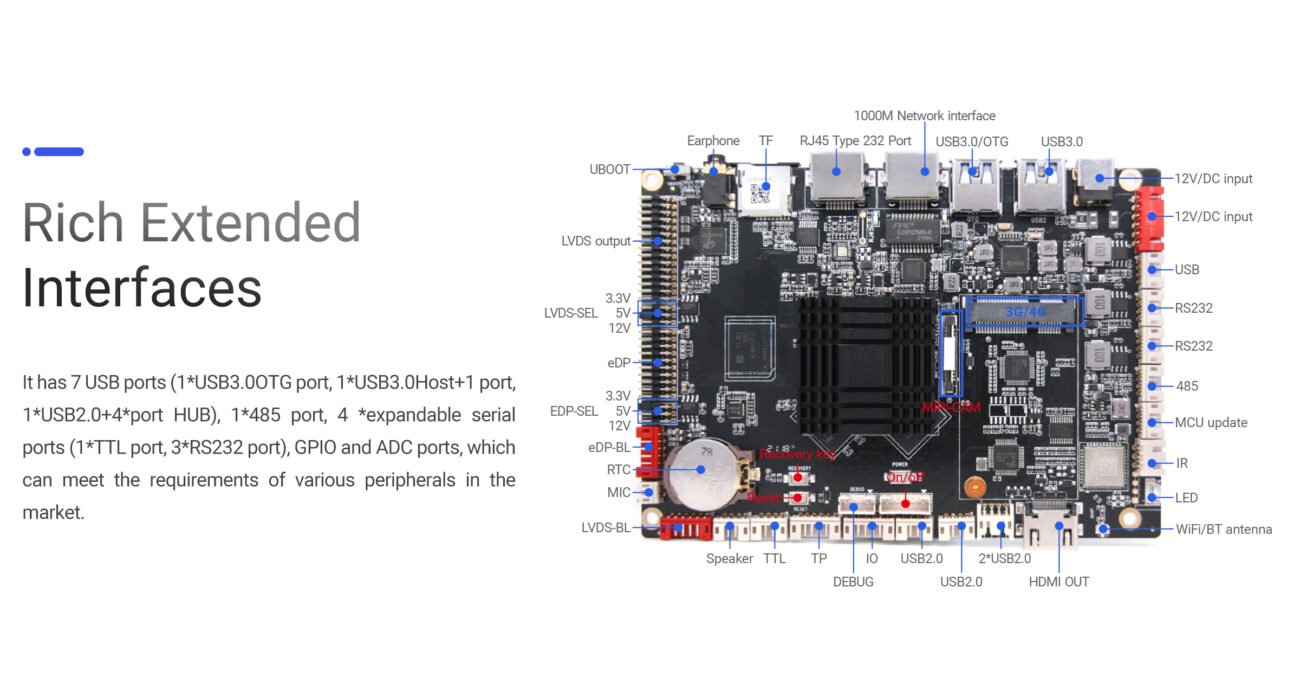
Why Linux ARM Motherboards Are Ideal for Edge AI Computing
As artificial intelligence continues to push computing to the network’s edge, businesses are looking for hardware platforms that can deliver real-time processing, low power consumption, and flexible customization — all at scale. In this pursuit, Linux-based ARM motherboards have emerged as the ideal foundation for edge AI computing.
Whether you’re deploying smart cameras, autonomous machines, or AI-powered kiosks, the combination of ARM architecture and open-source Linux software offers a unique balance of performance, power efficiency, and control.
In this guide, we’ll explore why Linux ARM motherboards are perfectly suited for the edge AI revolution, diving into technical benefits, real-world applications, and recommended hardware platforms from ShiMeta Devicess.
What Is Edge AI?
Edge AI refers to the processing of artificial intelligence algorithms directly on edge devices — close to the data source — rather than relying on centralized cloud servers. This local inference enables:
- Lower latency: Immediate response without round-trip cloud communication
- Greater privacy: Sensitive data stays on the device
- Reduced bandwidth usage: Less data sent to the cloud
- Offline functionality: Continue operations without internet access
These advantages make edge AI essential in applications like smart cities, retail analytics, industrial automation, and healthcare diagnostics.
Why Hardware Matters at the Edge
Running AI at the edge presents challenges:
- Limited physical space and cooling
- Power constraints (especially for battery or PoE devices)
- Need for real-time inference without server-class GPUs
That’s where ARM-based Linux motherboards thrive.
Benefits of ARM Architecture for Edge AI
1. Power Efficiency
ARM processors are designed with performance-per-watt in mind. Unlike x86 processors, which often require fans or heatsinks, ARM chips run cooler — enabling fanless, passively cooled systems ideal for edge deployments.
This makes them perfect for:
- Smart kiosks
- Remote IoT devices
- Solar-powered field equipment
- Vending machines
2. Integrated AI Acceleration
Modern ARM SoCs (System-on-Chips) often include:
- NPUs (Neural Processing Units) for AI inference
- DSPs (Digital Signal Processors) for real-time audio/video analysis
- GPUs for parallel computing and rendering
For example:
- Rockchip RK3588 delivers up to 6 TOPS of AI performance
- NXP i.MX 8M Plus offers an integrated NPU with 2.3 TOPS
- RK3399Pro supports 2.4 TOPS and edge-ready toolkits
These SoCs can handle tasks like object detection, pose estimation, speech processing, and classification — all locally, without the cloud.
3. Scalable and Compact Form Factors
ARM motherboards are available in a range of sizes:
- Pico-ITX
- 3.5″ SBC (Single Board Computers)
- Custom embedded modules
Their small footprint and minimal power needs allow integration into:
- Panel PCs
- Smart vending machines
- Surveillance devices
- Embedded robotics
Why Linux Is the Ideal OS for Edge AI
Pairing ARM hardware with Linux offers several distinct advantages that proprietary operating systems can’t match:
1. Open Source Customization
Linux gives developers full control over:
- Kernel modules
- Device drivers
- Bootloaders
- Userland applications
You can strip down or expand the OS to match your device’s purpose — whether it’s a high-performance AI kiosk or a headless monitoring terminal.
Popular Linux distributions for embedded ARM:
- Yocto: Custom, minimal embedded builds
- Ubuntu Core: Secure and container-friendly
- Debian ARM: Community-supported and flexible
- Buildroot: Simple and fast embedded Linux builds
2. Real-Time Capabilities
Linux can be patched with PREEMPT-RT for real-time operations — a critical feature for edge AI devices requiring:
- Consistent response times
- Low-latency signal processing
- Precision control (e.g., robotics or motion systems)
3. Compatibility with AI Frameworks
Linux supports a wide range of open-source AI libraries and frameworks, such as:
- TensorFlow Lite
- ONNX Runtime
- PyTorch Mobile
- OpenCV
- GStreamer
- ROS (Robot Operating System)
Most ARM SoC vendors provide Linux SDKs with support for AI toolchains, including pre-compiled models and acceleration APIs.
4. Secure and Scalable Remote Management
Using Linux, developers can integrate:
- Secure boot
- Remote OTA (Over-the-Air) updates
- VPN or SSH access
- Docker and containerized deployment
This helps scale operations from prototype to thousands of deployed units, each with individualized AI models or configurations.
Use Cases: Where Linux ARM Boards Power Edge AI

Smart Cameras and AI Vision Systems
- Real-time facial recognition, LPR (license plate recognition)
- Object tracking and crowd analytics
- Works in low-light or low-power setups
Industrial Automation & Robotics
- Quality control through vision AI
- Predictive maintenance via sensor fusion
- Robotic arms with real-time feedback and control loops
Smart Retail and Digital Signage
- AI-powered customer engagement
- Heatmap tracking and demographic analysis
- Voice or touch-based interactive displays
Environmental Monitoring
- Edge-based analysis of sensor data (air, noise, light)
- Energy-efficient deployments in forests, farms, or urban areas
- Solar-powered devices running Linux on ARM
Healthcare Devices
- Patient recognition at kiosks or rooms
- Thermal screening and mask detection
- On-device vitals processing with AI
ShiMeta ARM Motherboards for Edge AI
ShiMeta Devices provides a line of industrial-grade ARM motherboards pre-configured with Linux BSPs and optimized for AI at the edge.

- CPU: 8-core ARM Cortex-A76/A55
- NPU: 6 TOPS
- Video: Dual 4K HDMI, eDP, LVDS
- Connectivity: USB 3.1, PCIe, M.2 SSD, dual GbE
- Use Case: Advanced digital signage, multi-camera AI vision, robotics

- CPU: Dual Cortex-A72 + Quad Cortex-A53
- NPU: 2.4 TOPS (integrated)
- Display: HDMI 2.0 + MIPI/DSI
- I/O: GPIO, I²C, SPI, UART
- Use Case: Retail AI terminals, industrial control, kiosks
How to Choose the Right Linux ARM Board for Edge AI
AI Performance
- Entry-level: RK3399, Allwinner A133 (no NPU)
- Mid-tier: RK3399Pro, i.MX 8M Plus
- High-end: RK3588, NVIDIA Jetson Nano (optional x86 alternative)
Thermal Design
- Passive cooling for kiosks and indoor systems
- IP-rated enclosures with aluminum heatsinks for outdoor/industrial use
Form Factor & I/O
- Match board size to chassis/enclosure constraints
- Check for USB 3.0, camera inputs (MIPI CSI), HDMI, and serial interfaces
Software Support
- Does it include Linux BSPs?
- Are there SDKs or sample code for AI deployment?
- Is the community active?
Security
- TPM or secure boot for healthcare or financial use
- OTA support with version rollback
Conclusion: Smarter AI at the Edge with Linux on ARM
In a world where edge intelligence is key to speed, privacy, and cost reduction, the hardware-software stack you choose matters. Linux ARM motherboards provide a flexible, secure, and power-efficient foundation for AI systems deployed anywhere — from urban kiosks to remote sensors.
With ShiMeta’s selection of AI-optimized Linux ARM motherboards, OEMs and developers can build scalable, robust edge solutions backed by industrial-grade reliability and open-source flexibility.











